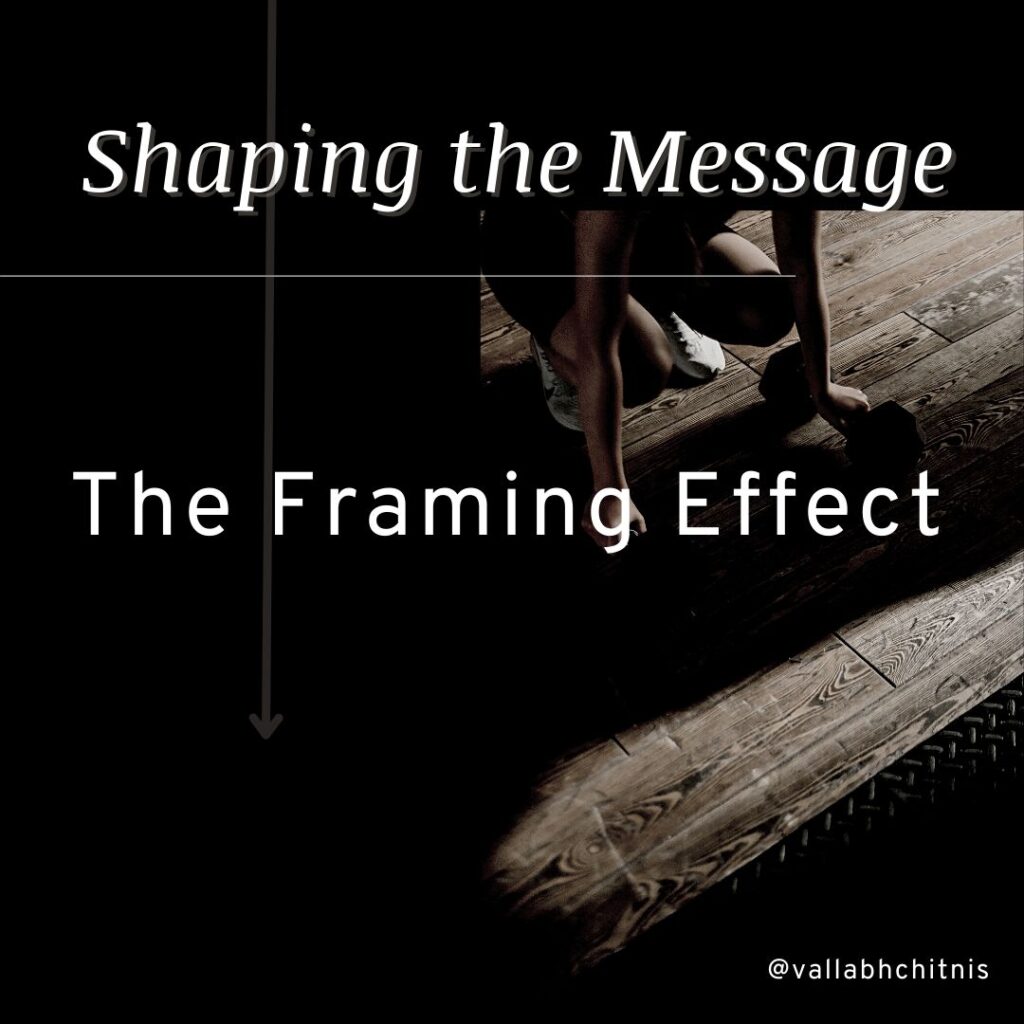A fitness app does an A/B testing with the following lines:
A: “Avoid missing your workouts with our reminders!”
B: “Achieve your daily fitness goals with our motivational alerts!”
Both cases highlight the same feature – “reminders to exercise.”
Which message do you think passed the A/B test?
Option A focuses on missing workouts = negative outcome.
Option B focuses on reaching fitness targets = positive goal.
Option B would relate better with the users. This is the framing effect.
What is the Framing Effect?
The framing effect is a cognitive bias where our decisions are influenced by how information is presented rather than the information itself. The message framing impacts how it is interpreted.
How to Identify the Framing Effect?
- Check whether the language emphasizes gains or losses.
- Observe the emotional response elicited by different representations of the same fact.
- Change a single word or phrase and see if it alters the message’s perception.
The framing effect directly impacts customer behaviour and decision-making. Proper framing can drive better product engagement and, ultimately, sales.
